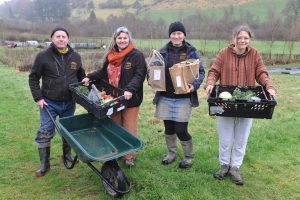THE NATIONAL SHEEP ASSOCIATION (NSA), working in partnership with others, is delighted to receive the additional funding to explore consumption opportunities for UK heritage sheep breeds connected to landscapes and specific products.
NSA Mutton Consultant Bob Kennard has put together the information below in conjunction with a survey designed to gather views on the proposals.
Consumption of sheep meat is in long-term decline, especially when compared to poultry consumption
The structure of the UK sheep industry has changed over the past 40 years from a predominantly traditional stratified system, towards a much more non-stratified one, where a few ‘general-purpose’ breeds are scattered in several ecological and altitude zones to directly produce finished lambs
Hill breed populations have declined quite dramatically over the past 40 years, as have other traditional UK Heritage breeds.
Whilst the pure-bred numbers have been in general decline, several cross-breds have been on the rise
A few breeds have seen dramatic increases in numbers, including the Texel and Lleyn
New breeds and composites are still appearing. This is a continuation of breeding innovation that has occurred for centuries. However, there is some concern in the industry about recent such developments, especially if the ownership of these genetics is held by breeding companies with contacts, skills, and finance, to establish marketing relationships with national supply chains and/or supermarkets. Experience of such developments in other livestock sectors is that it can have sudden and far reaching effects on reducing genetic variety.
The Dangers
These changes have been interpreted as increasing “efficiency”. However, there are dangers, two of which are particularly important.
A) The threat to the genetic viability of our native sheep breeds
The UK has over 60 native breeds of sheep, the highest in the world. The decline in the commercial use of traditional Heritage breeds of sheep threatens the priceless genepool which they give us. Who knows what genetic traits will be needed in future, especially with the effects of climate change? This national asset of genetic variability could disappear as populations of many breeds shrink to genetically non-viable levels. No sheep breed can rest on its laurels and resist moving with the times, but all breeds carry valuable traits that need recognition. Their future will be more secure if they succeed in the marketplace.
B) The threat to the landscape and communities of the uplands.
The decline of stratification has reflected a decline in traditional sheep farming systems, which have developed and maintained many landscapes over hundreds of years. The intensification and ‘increased efficiency’ of farming enterprises such as pigs, poultry and dairy have changed these sectors beyond recognition. Sheep farming, particularly in the uplands, remains the final bastion of traditional farming systems in the UK, based largely on family farms. However, unlike other farming sectors which are less landscape-based, the decline of traditional sheep farming has more far-reaching impacts. Not only are the cherished landscapes and other pastoral areas under threat, but also the communities which still largely rely on traditional sheep farming for their survival.
Industry Response
It is with this backdrop that the NSA, together with a number of industry bodies are developing a strategy to help address these problems. With a recent donation from the Prince’s Countryside Fund to add to industry donations, we are now able to proceed with a feasibility study to find a practical solution. The work, to be carried out over the next few months, will investigate whether a sustainable project to add value to UK Heritage sheep breed supply chains can be developed.
Diversifying the Sheep Meat Market
Industry-scale promotional and marketing efforts currently concentrate, understandably, largely on just one product, Standard Lamb. Meanwhile, sheep production has a gloriously diverse heritage.
It has been said that breed has little impact on sheep meat flavour, but this is only likely to be true of lamb where flavours have not had time to develop, as with veal. Increasing evidence is now demonstrating that with mutton there are definite differences in flavour between breeds. This would have been no surprise to Victorian Foodies.
The current sheep meat market could be compared to the wine market of the 1950s and 1960s, when there was only a small handful of widely available wines. This has now exploded into thousands. The same pattern can be seen for cheese, beer, bread and so on. With increased interest in the story behind our food, the time seems right to offer the consumer more choice in sheep meat, without harming the core Standard Lamb. Indeed, a number of producers have been doing so for years, albeit without much industry support.
Why should we more actively support the diversity of sheep products?
- If the diversity of sheep meat was actively celebrated and promoted, it could lead to important benefits;
-Enhanced farm incomes, particularly in upland areas;
· Support & encouragement for local supply chains, and other local businesses, keeping more wealth within the local community;
· Help to ensure the financial and genetic viability of our traditional UK heritage breeds;
· Help to maintain traditional farming systems which have developed in harmony with the environment, and created our iconic British landscapes.















